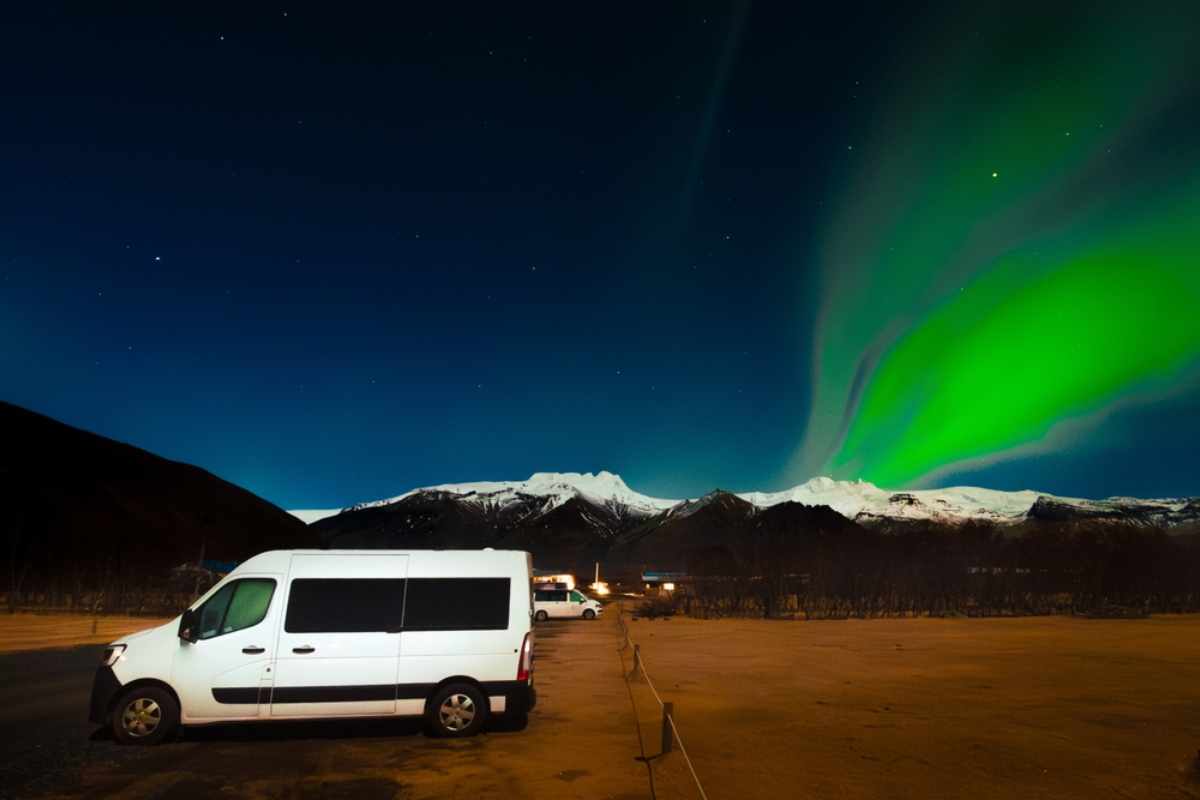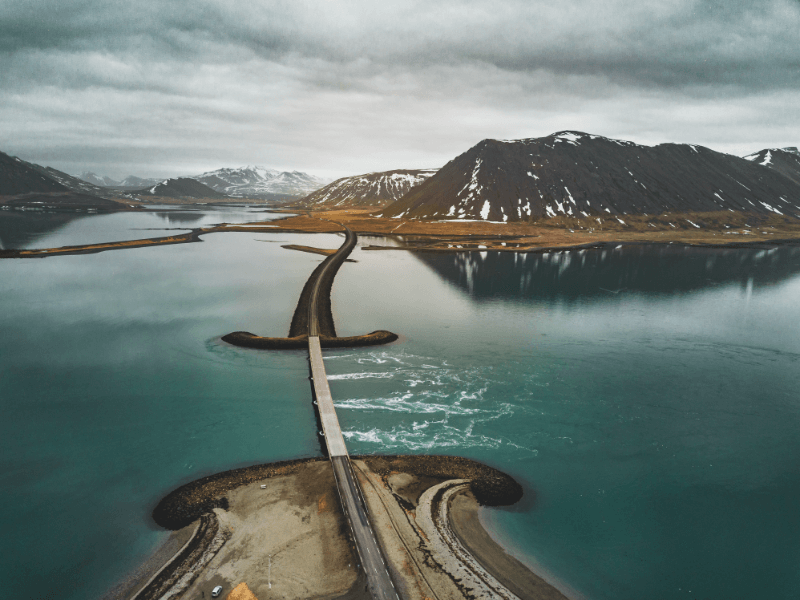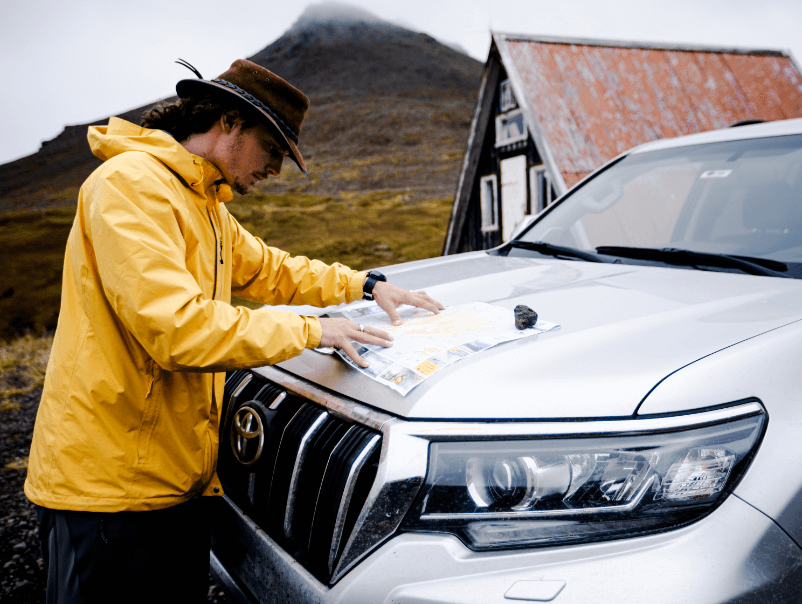There are a lot of misconceptions surrounding winter in Iceland. Mostly because a country called Iceland certainly has to be the coldest and most unpleasant place to visit during the winter season, right? Wrong! The weather might be cold, but it creates an absolutely mesmerizing winter wonderland and allows visitors to experience once-in-a-lifetime phenomena.
In this article we’ve done a deep-dive into the season, so you can see all the island has to offer during the wintertime and to help you decide whether this might just be the perfect time to plan your trip to Iceland.
Iceland Winter Months
Winter in Iceland is from December to March. Here’s what you can expect from each month:
December
December in Iceland is like the scene from a Christmas movie. Blankets of snow, and glistening ice, so you can feel the festive spirit in the air. You’ll also find plenty of festive events to attend.
January
The New Year celebrations might be in your rearview mirror, but that doesn’t mean that the fun has stopped. Despite still being one of the darkest months, the island is well-prepared, and you’ll find favorites such as the ski slopes well lit up during January in Iceland.
February
February in Iceland is still very much a winter month. But the daylight hours have already drastically increased to more than 10 hours from the mid-winter 4 hours. So, during February you can still enjoy all the attractions and activities of winter, but with more daylight hours to enjoy them.
March
March is the tail end of winter. Whilst still enjoying all the winter attractions and activities, daylight hours are still more than 10 hours a day and the days have already begun to warm up.
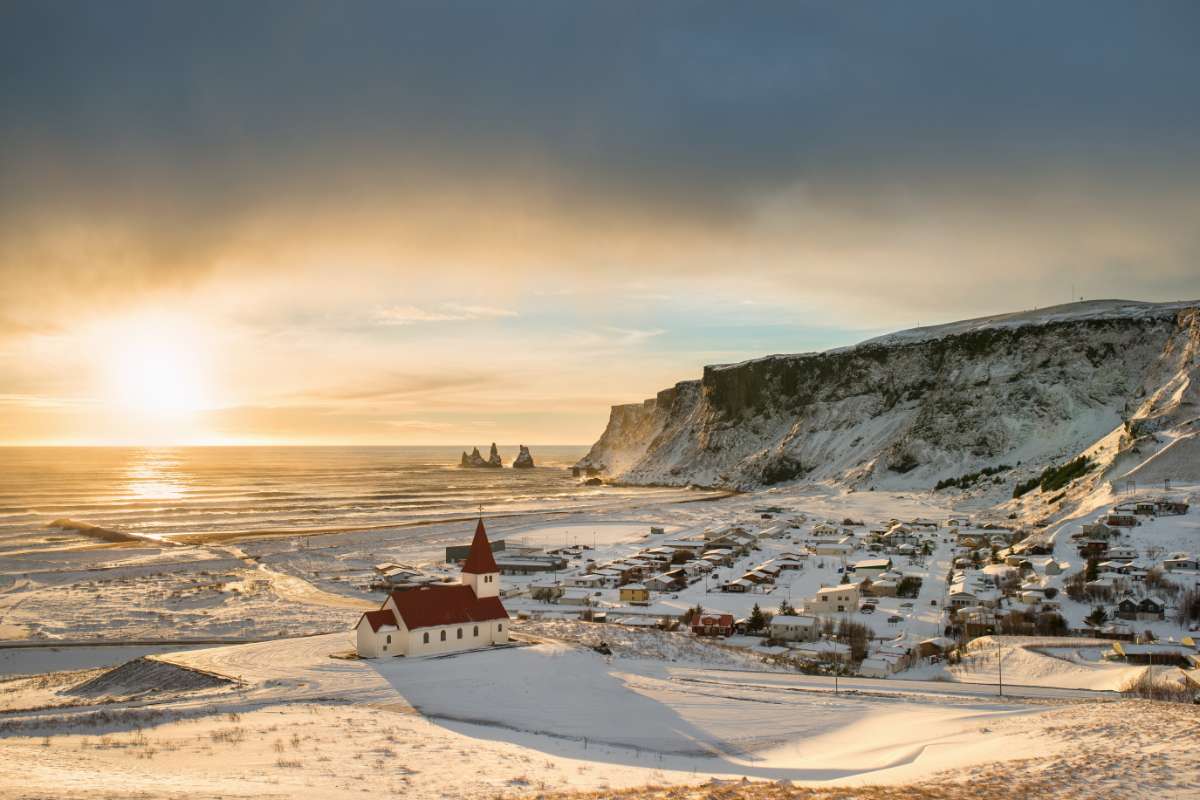
The Pros and Cons of Spending Winter in Iceland
Everything has pros and cons in life. We have created this nifty overview so you can easily weigh them up and see if an Iceland winter trip is the right fit:
Pros
- As with most places across the globe, Iceland’s summer months are also the peak tourist months. That means that when you’re visiting Iceland in winter, you won’t need to get up at the crack of dawn to ensure that you get a glimpse of the day’s attractions or end up getting lost in the crowds.
- Not visiting the island during the peak season also means that you’ll be giving those peak season prices a skip.
- Iceland during winter is absolutely gorgeous! Blankets of snow, glistening ice… it truly is the ultimate winter wonderland.
- The winter season brings with it the perfect conditions for special attractions and unique phenomena, such as the Northern Lights and exploring ice caves.
Cons
- There’s no getting around it, an Iceland winter can get pretty intense as all the harshest elements come out to play; snow, rain, and the legendary Iceland wind that can literally blow you into your next car insurance claim.
- Iceland winter travel is a bit restricted, especially if you have the Highlands and the Westfjords on your Iceland bucket list. During the colder winter months, many roads and routes are closed, which include the Highlands and certain parts of the Westfjords.
- Whilst the winter conditions make certain phenomena possible, it also makes other phenomena impossible. So, if you were hoping for a Midnight Sun, the few daylight hours of an Iceland winter aren’t going to give you that.

What You Can Expect From the Weather When Spending Winter in Iceland
As we have already touched on, visiting Iceland in winter means some pretty harsh weather. Ironically, it’s these harsh weather conditions that make the island so magical this time of year. You can expect anything from festive snowfall and some rain, to raging blizzards and winds of 100+ km/h!
Temperatures range between -30 to 2 degrees Celsius, but the needle generally hovers around the 0-degree mark. For a long time, there has been a misconception that Reykjavík is somehow warmer than the rest of the island. But this is merely an illusion. Those visiting the capital city may experience a change in weather and temperature as they enter the city, but this is merely due to the buildings offering a certain amount of shelter against the extreme elements.
Daylight hours during the height of the wintertime (December or January in Iceland) are very few and you’re looking at roughly 4 hours each day to plan your itinerary around. But don’t worry, Iceland is properly geared against the dark and most attractions are open and lit up like Christmas trees whenever the sun isn’t out. Although the Iceland weather during winter may sound quite intimidating, the island is well-prepared and if you are too, you are in for the adventure of a lifetime!
Packing List When Visiting Iceland in Winter
One of the ways to prepare for the Iceland winter is by packing the correct things. This can become quite a challenge for those who end up packing every coat and blanket they can fit into their suitcase. This is completely unnecessary and to steer you away from that confusing chaos, we’ve created this helpful packing list that you can use as a guide:
- Raincoat
- Long, waterproof winter coat
- Waterproof jacket
- Waterproof pants
- Casual winter pants (for the days spent in the city)
- Wool and fleece sweaters (take one and then buy woolen sweaters on the island – they are absolutely gorgeous and incredibly warm)
- T-shirts and long-sleeved shirts
- Thermal underwear
- Thermal leggings
- Warm, woolen socks
- Waterproof hiking boots (irrespective of whether you’re planning on going hiking or not)
- Casual shoes (also for when you’re out and about in the city)
- Ice cleats
- Warm, waterproof gloves
- Warm scarf
- Warm hat (we can recommend beanies)
- Bathing suit (for the times you’ll be soaking in the hot springs)
- Flip-flops (for at the hot springs and public changing rooms)
- Quick drying towel (trust us, you do not want to be lugging around wet things during the winter in Iceland)
- Sunglasses
- Thermos flask (there’s nothing better than a nice, hot drink out in the cold)
- Flashlight (to prep for those few daylight hours)
- Moisturizing cream and lip balm (dry skin and cracked lips are very much at the order of the day during the Iceland winter)
- Washcloths (visitors are surprised to find that most accommodation in Iceland does not provide this)
- Toiletries and medications (please just check flight restrictions beforehand, as you don’t want to end up leaving your expensive bottle of conditioner at the airport)
- Electronic devices: cables, chargers, an adaptor, a power bank, etc.
- Backpack (for day outings)
- A small, portable ice scraper (this may seem bizarre, but most rental agencies do not offer these, so people pack them along)
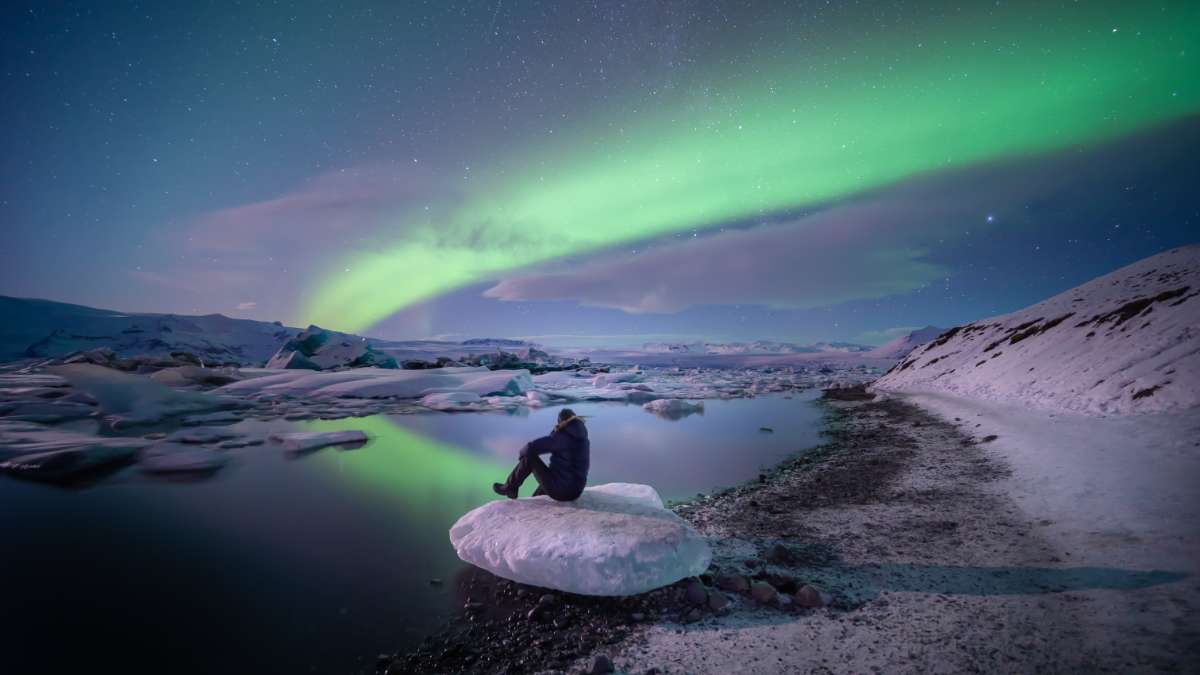
Camping in Iceland in Winter
Relax! No one is expecting you to pitch a tent and brave the winter elements like some survival reality TV series. Just like anywhere else in the world, camping is not a big thing during the colder months. But it’s a fantastic budget hack when visiting the island during wintertime.
Instead of pitching a tent, simply rent a campervan – that sorts out your transport and accommodation on the island. This also means that you’ll be camping in comfort and saving a ton on accommodation costs. If you want to save even more, we suggest that you purchase the Camping Card for just €159. This will give a family of 2 adults and up to 4 children access to a variety of campsites across the island for 28 nights.
To give you an idea of the type of savings you're looking at with the Camping Card, a campsite generally charges between $10-$20 per person per night. So even if you are just one person, you would’ve already paid $280 - $560 out of pocket for your 28-night stay! Just keep in mind that certain regions are closed during the colder months, so double-check which campsites will be open during this time.
Driving in Iceland in Winter
As you can imagine, the weather can make driving pretty challenging. This is because of two reasons. Firstly, driving in snowy, windy, and icy conditions when you’re not used to it can be quite nerve-wracking. So, always ensure that the driver behind the wheel is feeling comfortable with driving in less-than-ideal weather situations. Also, keep a close eye on the Iceland weather forecasts and the Iceland road conditions before heading out, so you don’t drive into a nasty surprise.
Secondly, due to the extreme weather conditions the island may have, it’s not just certain regions and roads that are temporarily closed during the colder months (such as the F-roads in Iceland). Sudden road closures can occur at the drop of a hat and if you did not create a flexible trip itinerary it can cause havoc on your Iceland winter vacation plans.
That being said, we still thoroughly believe that the best way of exploring the island is via road trip and there are still plenty of popular road trip routes open to the public during the winter months. Just have a chat with your rental agent about your planned routes and any winter vehicle accessories or extras that may be required, such as snow tires. It can always be a good idea to have a 4x4 rental vehicle.
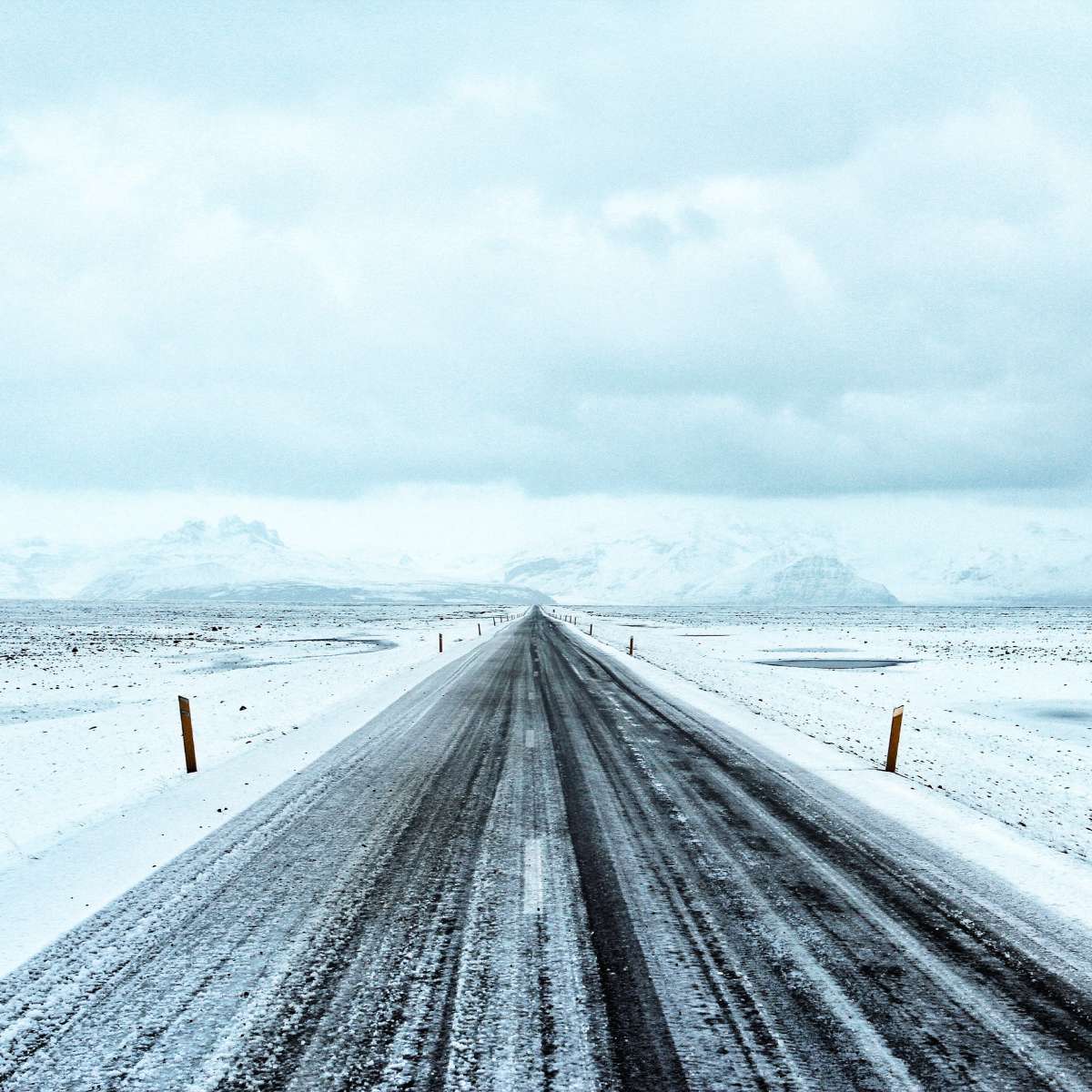
Things to Do When Spending Winter in Iceland
As we’ve already touched on, the winter offers many unique experiences to visitors visiting the island. These are just some of the things you can look forward to:
Visit Some Waterfalls
The island boasts 10 000 waterfalls all over Iceland and during the winter months these already impressive water displays turn into something from fantasy movies. These gigantic waterfalls with powerful water rushing over the cliff faces are half frozen in time. Whilst the water is still flowing, they now also have long frozen water tentacles draping down like they’re reaching out to the ground. Add a blanket of snow to the landscape, and you’ve got the picture-perfect postcard image. Some of the falls we recommend you visit are:
- Godafoss waterfall
- Gullfoss waterfall
- Dettifoss waterfall
- Svartifoss waterfall
- Seljalandsfoss waterfall
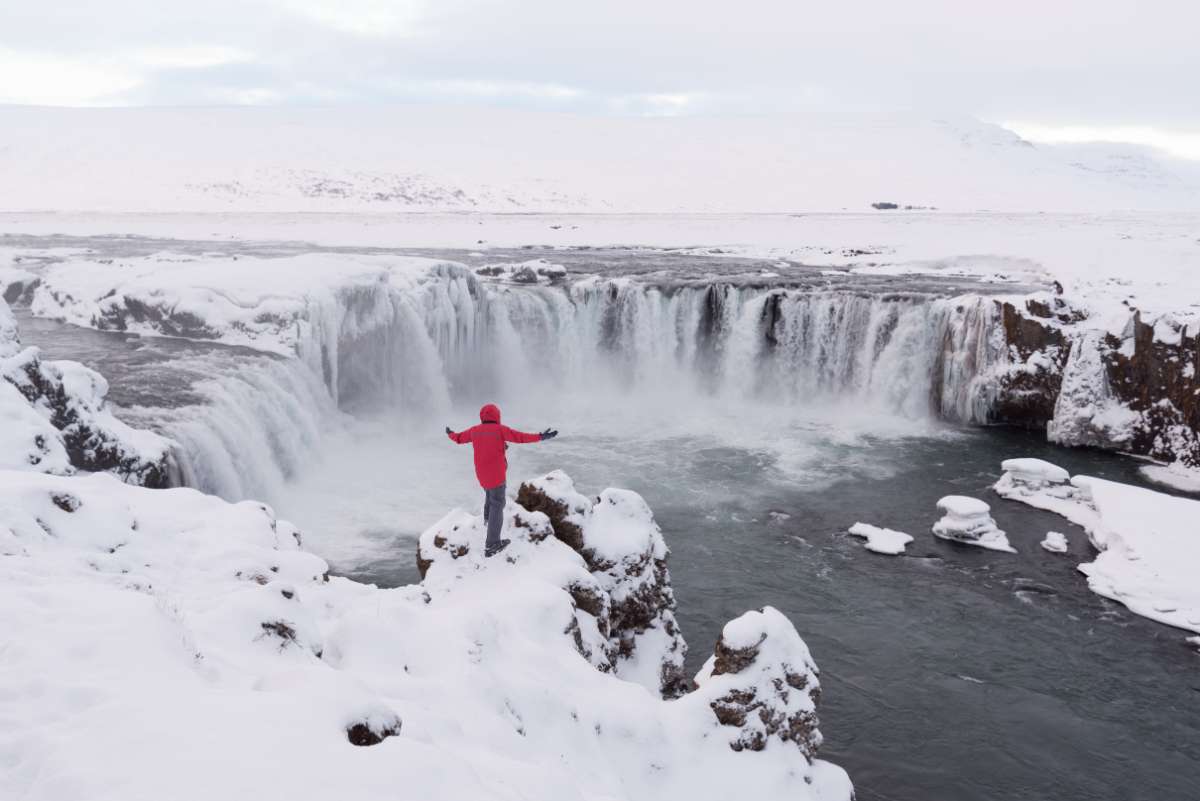
Have a Soak in a Hot Spring
Soaking in the hot waters overlooking the frozen and snow-white landscape is something otherworldly. But the hot springs in Iceland are not just for some much-needed rest and relaxation. The hot springs have long since been seen as a great way to take care of all sorts of aches and pains in the body and, due to the water being so mineral-rich, they have healing properties when it comes to one’s skin. Some of the hot spring hot spots include:
- Secret Lagoon
- Reykjadalur
- Blue Lagoon
- Kvika Footbath
- Hrunalaug
https://www.campervaniceland.com/assets/img/blog/392/hot-spring-iceland-winter.jpg
Explore an Ice Cave
This is something that you can only do during the colder months, as most of these caves are closed the rest of the year due to safety concerns (ice melts, remember?) Whether water or lava, one of these has tunneled its way through the thick glacier ice, leaving an entire cave made completely of ice. There are a few must-visit ice caves in Iceland such as:
- Crystal Ice Cave
- Katla Ice Cave
- Langjökull Ice Cave
- Vatnajökull Ice Caves
- Skaftafell Ice Caves
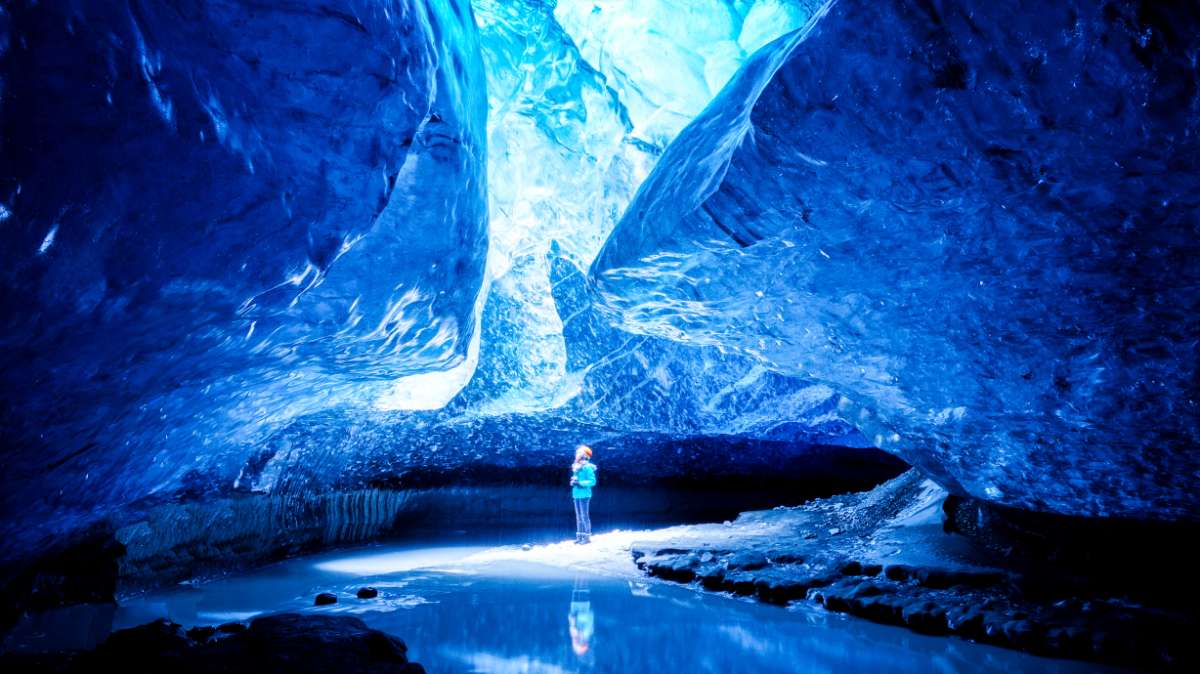
Walk on a Black Sand Beach
Another very unique experience is walking on the black sand beaches of Iceland. These beaches have been created by lava sediment that’s slowly been broken down throughout time. It’s just another magical creation by the Land of Fire and Ice. There are plenty of popular black sand beaches on the island, and some even offer a plane wreck and incredible rock formations. Some of these beaches are:
- Reynisfjara
- Solheimasandur
- Diamond Beach
- Stokksnes
- Dyrholaey
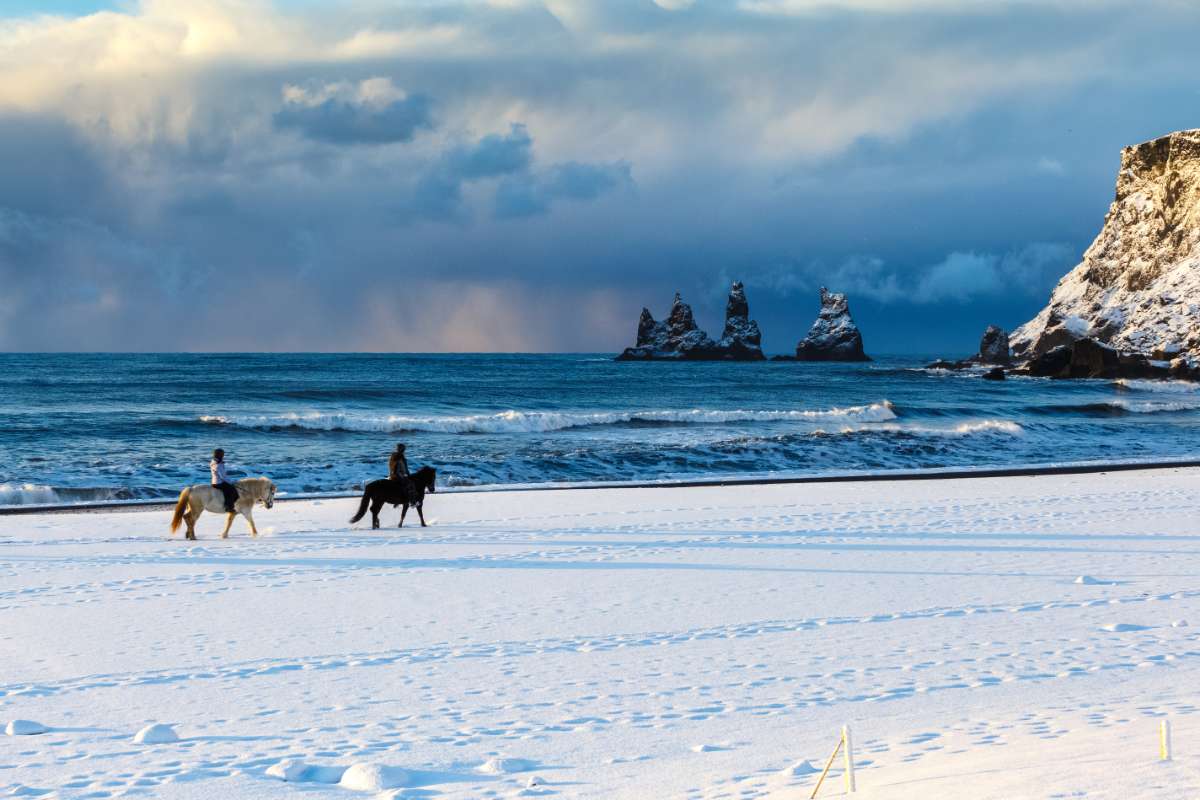
Go Skiing or Snowboarding
What would a winter vacation in freezing conditions be without taking on the slopes? Whether you’re a beginner or a pro, Iceland ski resorts cater to all. Some of the most popular resorts to visit are:
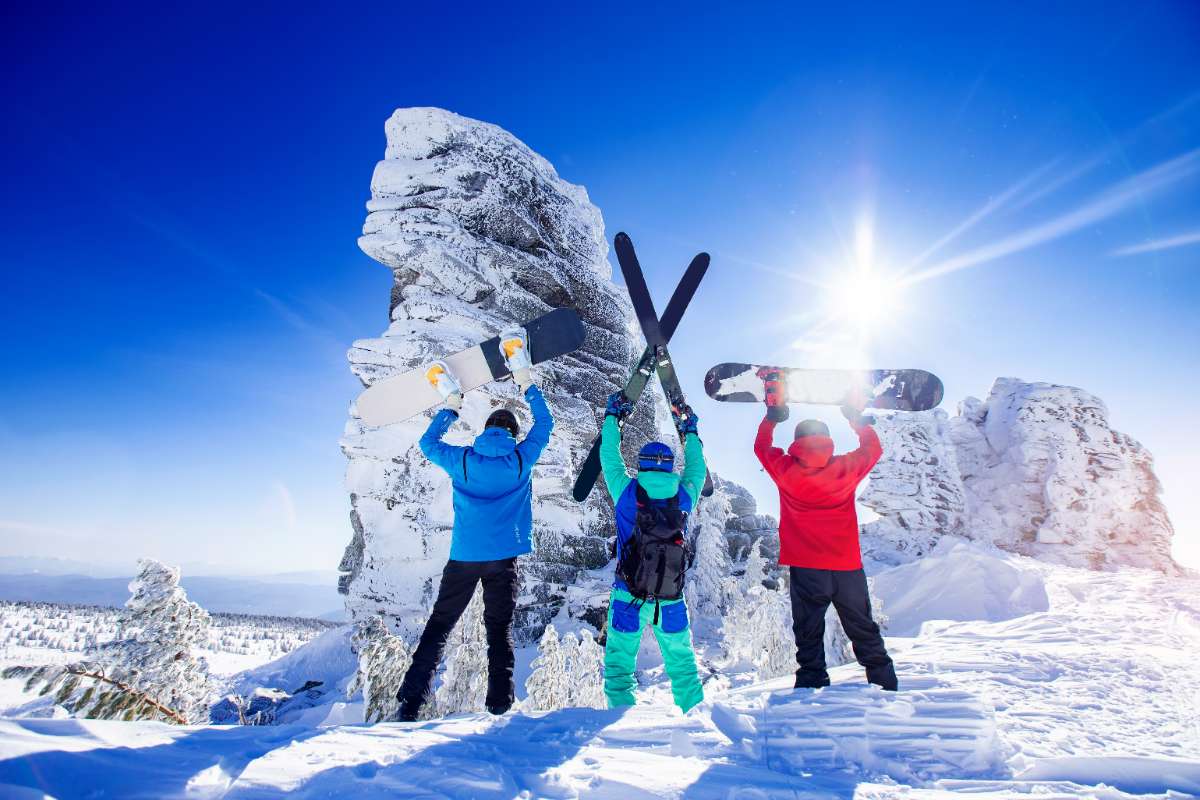
Winter in Iceland; Winning the Weather Awards
Many have the wrong impression of Iceland in winter. They think of it as cold and dark, with nothing much else to do except sip hot cocoa in front of a fireplace. Don’t get us wrong, we’ll never knock a good cup of cocoa, but we consider the winter weather to be like hitting the weather lottery.
Yes, there are certain extreme elements to it, but where does the weather allow you to walk through a giant block of ice?! Take a hike across a glacier?! Or see the Northern Lights swivel across the sky like the craziest neon strobe lights you’ve ever seen?! Winter in Iceland is a magical time, so book your trip, rent a campervan in Iceland and explore everything this incredible season has to offer for yourself.



 By
By 


